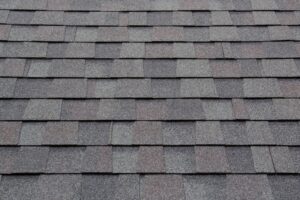Hail storms are a major problem for homeowners in the Houston area. In fact, the state of Texas experiences more hail storms than any other part of the country, with an average of 667 storms per year. Across the country, hail storms accounted for $1.1 billion in damages this year alone.
Hail presents a major risk for homeowners. Yes, a roof may protect you from a hailstone crashing through the ceiling of your house, but the damage that hailstones can inflict on a roof is significant. Often, the damage isn’t at first apparent, which is why we want to discuss the topic with you.
Recognizing how hail can harm your roof and knowing what it looks like will help you know when to call us to repair hail damage in Richmond, TX. This is one of our areas of expertise, and we work closely with insurance companies to help our customers with roof damage claims.
How Hail Damages Your Roof
During a storm, the impact of hailstones can create dents on shingles that expose their asphalt layers to the elements. Water entering the asphalt layer weakens the bond between the asphalt and the granules. This will overall weaken the effectiveness of the shingle. After the storm, the exposed shingles will receive direct UV rays from the sunlight that will make the asphalt layer brittle. The heat from the sun will also cause the asphalt to expand, then later contract, which will continue to weaken the shingle.
The long-term effects of the damage to the shingle is the creation of leaks where water can enter into the roof. Shingle warping will also make it easier for strong wings to damage them. If hail damage continues without repairs for years, the amount of leaking can allow water into the attic or other parts of the house. Water inside the roof itself can lead to mold rot that will force a complete roof replacement.
Larger hailstone damage will speed up the process: a large impact on shingles can cause them to shatter, leaving the roof exposed to the elements.
Defending Your Roof
Smaller hailstones will mostly just bounce off the surface of your roof. But hailstones larger than 1” in diameter are the ones to worry about, as they can damage and outright shatter shingles. The better class impact shingles you have, the larger hailstones the shingles can resist. Class 4 impact shingles can hold up against the impact of 2” hailstones. We strongly recommend Class 4 impact shingles for customers when they have a roof replacement.
Noticing Hail Damage
After a hail storm, we advise you to climb up a ladder and look over your roof (please don’t climb around on the roof). What you’re looking for is a random pattern of black dents on the shingles, or for shiny marks. If you can touch these marks, you’ll find they feel soft compared to the material around them. Also examine metal parts of the roof (such as vent covers and flashings) to see if there are dent marks.
If you notice what appears to be hail damage, you can arrange for a free inspection with our team.
Reign Roofing Is Redefining the Roof Buying Process! Contact us today if you believe you need hail damage repairs to your roof.

